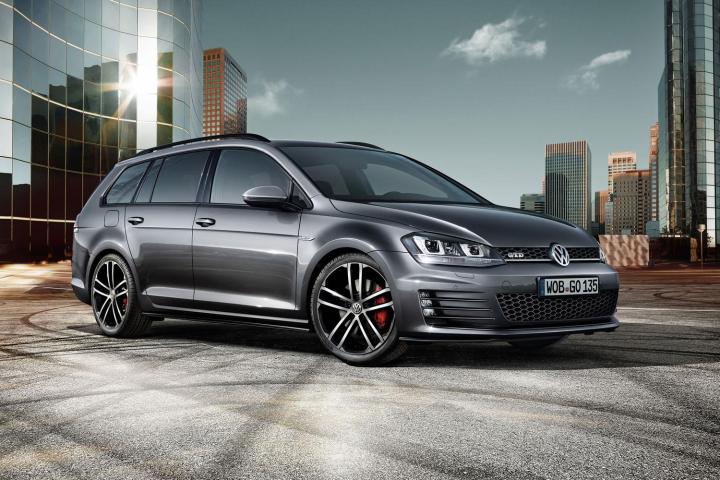
Designed to strike a balance between performance, fuel economy and practicality, the wagon was created by shoe-horning the GTD‘s 2.0-liter TDI turbodiesel engine into the Variant’s engine bay. The mill is tuned to generate 181 horsepower at 3,500 rpm and a healthy 280 foot-pounds of torque from 1,750 to 3,250 rpm. A six-speed manual transmission comes standard, and a six-speed dual-clutch DSG unit can be ordered as an option.
The GTD Variant sprints from zero to 62 mph in 7.9 seconds, half a second slower than its hatchback sibling. Alternatively, it returns up to 53 mpg in a mixed European cycle when driven with a light right foot.
Visually, the hardware store-friendly GTD gains deeper bumpers on both ends, 17-inch alloy wheels, smoked tail lights and honeycomb inserts in the radiator grille, styling cues that bring it in line with the GTD and the GTI. A sport-tuned suspension setup contributes to the aggressive look by lowering the ride height by about half an inch.
Checking the “Sports and Design Package” box on the list of options brings a driving mode selector, tinted windows, red brake calipers and 18-inch Nogaro alloy wheels.
The sport-focused treatment continues inside with Clark tartan upholstery, bucket seats for the front passengers, a golf ball-shaped shift knob and Checkered Black trim. Like all Variants, the GTD offers up to 57.2 cubic feet of trunk space.
The 2015 Volkswagen Golf GTD Variant is already available to order in Germany where it carries a base price of €31,975 (approximately $36,000). Unfortunately, Volkswagen has no plans to sell the hot-rodded oil-burning wagon in the United States.
Editors' Recommendations
- Volkswagen’s electric ID.Life concept car doubles as a gaming console
- Volkswagen Golf GTI and Golf R blend power, practicality, and tech
- Volkswagen joins list of automakers closing factories due to coronavirus
- Volkswagen’s celebrated Golf GTI returns with more power and new tech
- Volkswagen found something fun to do with its Atlas Cross Sport family hauler





